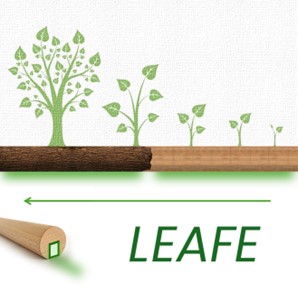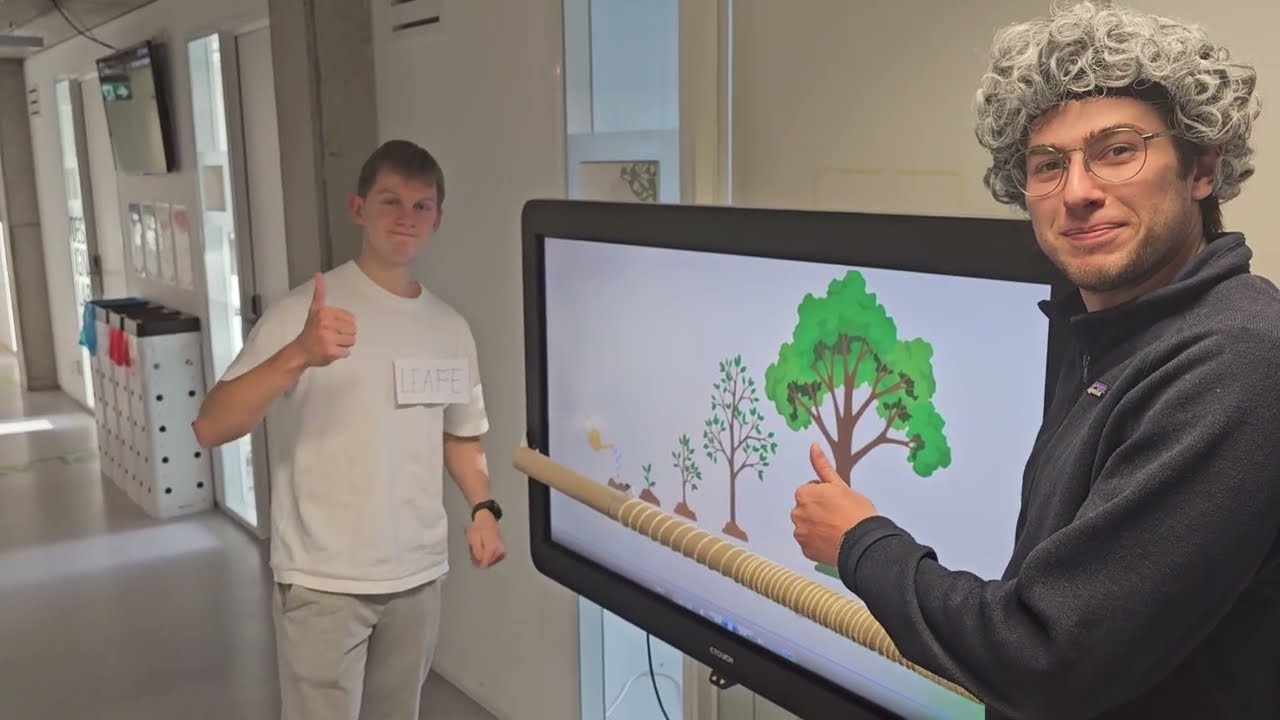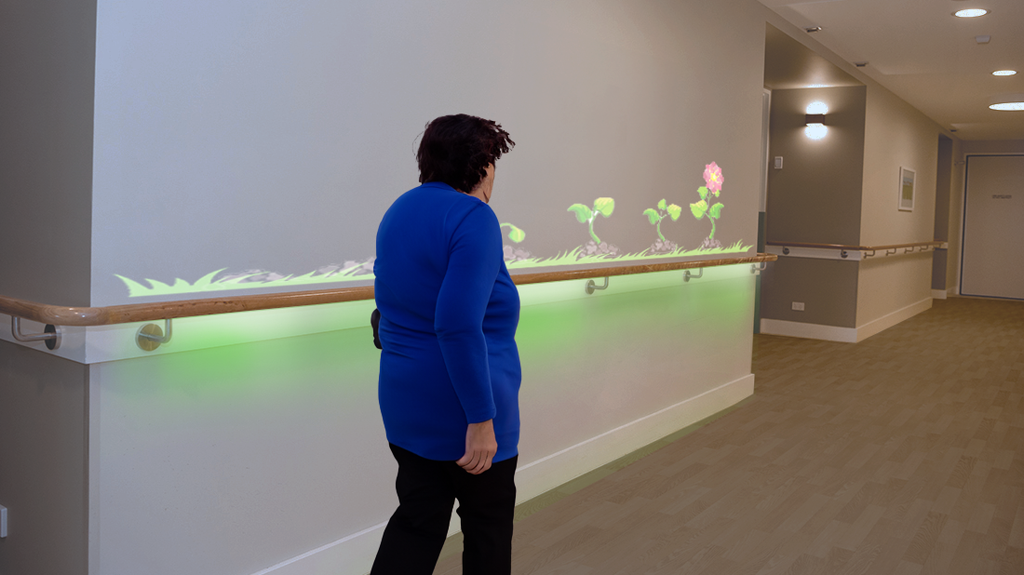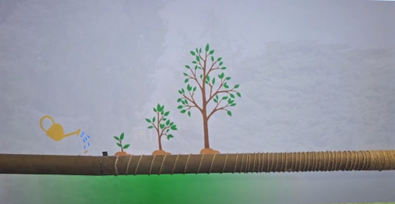Dementia patients often become disoriented when moving through a care facility, making daily navigation a challenge that demands extra support from caregivers. As part of the course Multi-Sensory Design, with Zwanenhof (Zenderen, the Netherlands) as a case study, we designed a multisensory wayfinding system in the form of a safety handrail that combines tactile and visual feedback through textures, subtle lighting, and projections. This feedback provides intuitive and comforting guidance, enabling residents to move around more independently and with greater confidence. In doing so, navigation becomes a safer and more autonomous experience for residents, while also giving caregivers more space to focus on other essential tasks.
How does your environment empower or restrict your independence?
Direction & Editing : Marica De Michele
Director of Photography : Jurica Marković
Music : Ivna Jurković
Production Assistant : Clara Gustafsson
LEAFE is a multisensory safety handrail designed to help residents navigate to and from the garden at their care facility. The handrail combines gradual texture, inspired by tree bark, with ambient green LED lighting and interactive projections of plants and flowers, inspired by the garden they are approaching. As residents move along the hallway and handrail, the texture gradually intensifies and the projections dynamically respond, offering directional clarity toward their garden destination. The balanced design is unobtrusive yet supportive, without becoming overwhelming. The design process involved the Lotus Blossom method to generate different concepts, followed by co-creation sessions and iterative refinement. The handrail was chosen for its strong multisensory qualities, real-world relevance, and low-cost impact. What makes LEAFE unique is its ability to enrich the navigational journey with a responsive living environment that empowers residents with safe, intuitive, and independent mobility.

LEAFE is highly relevant to the theme of Living Environment as it demonstrates how thoughtful, multisensory design can make care spaces more supportive, intuitive, and alive. It directly addresses the problem of understaffing in care facilities while enhancing both the physical and emotional well-being of residents and staff. Limitations remain in its scalability and in supporting navigation beyond the garden, such as to the kitchen or other areas. In these cases, caregivers may still need to provide assistance. Nevertheless, the hope is that residents’ time spent independently exploring the garden is enabled and enriched, reducing reliance on staff and fostering a greater sense of autonomy.





